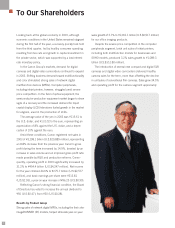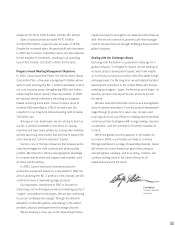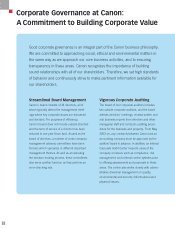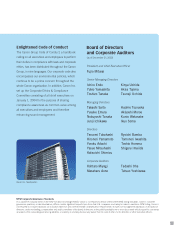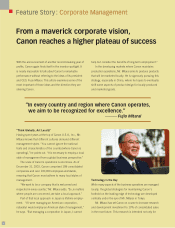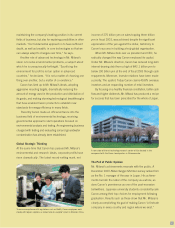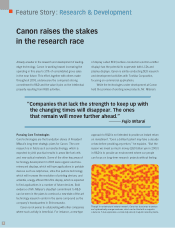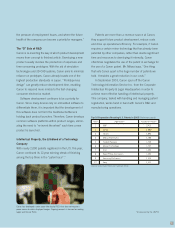Canon 2003 Annual Report Download - page 14
Download and view the complete annual report
Please find page 14 of the 2003 Canon annual report below. You can navigate through the pages in the report by either clicking on the pages listed below, or by using the keyword search tool below to find specific information within the annual report.
Feature Story : Environmental Responsibility
New initiatives affirm that environmental
commitment runs deep inside Canon
“Corporations have the responsibility to develop
advanced technologies that will stop
the destruction of nature.”
———
Fujio Mitarai
Kyosei
, or living and working together for the common
good, has long been a part of the Canon corporate culture.
A major facet of the
kyosei
philosophy is environmental
responsibility, and Canon, rather than being content to
follow others in environmental matters, or wait until legis-
lation forces change, takes the lead in developing practices
and policies that shoulder that responsibility.
Leadership Policies
Today companies need to concern themselves with the
total impact of their products on the environment: from
production through distribution, use and disposal. This
impact, known as a Life Cycle Assessment (LCA), is object-
ively measured and certified in Japan by the government-
affiliated Japan Environmental Management Association
for Industry (JEMAI). Canon cameras, printers and copying
machines have been certified for meeting the criteria of the
JEMAI program.
One of Canon’s boldest initiatives to date, Factor 2,
aims to halve the company’s environmental burden relative
to its sales (from 2000 to 2010). Thanks to its proactive
corporate policies towards the environment, Canon garnered
the No. 1 spot in the
Nihon Keizai Shimbun
(Nikkei)
ranking of manufacturers’ environmental policies in
December 2003.
Living up to Ideals
New regulations such as the RoHS (Restriction of Hazardous
Substances) Directive in Europe and elsewhere will have an
impact on Canon’s production methods. Lead-free solder,
for example, which is to replace traditional toxic lead solder,
demands different and more complex manufacturing pro-
cesses, due to its higher melting point. Although the final
details of the RoHS Directive are still awaiting confirmation,
Canon has moved ahead and begun developing a “green”
toxic-free procurement policy with other industry leaders.
Minimizing environmental impact in the area of
distribution may seem beyond Canon’s scope, but in 2003,
Canon announced that over 550 tons of carbon dioxide
Canon has proactively sought to minimize the environmental impact from the
distribution of its goods. The adoption of a new rail and ship container system
has significantly reduced the company’s reliance on trucks for transportation.
12


